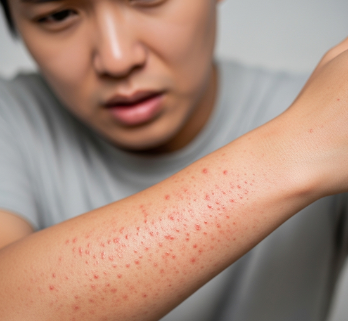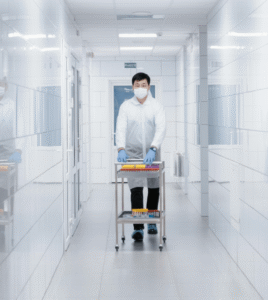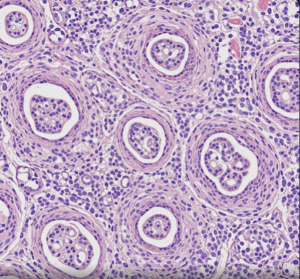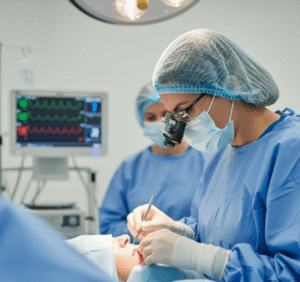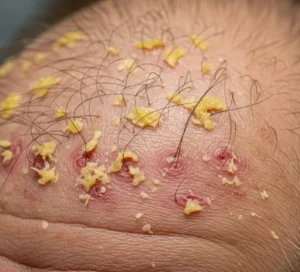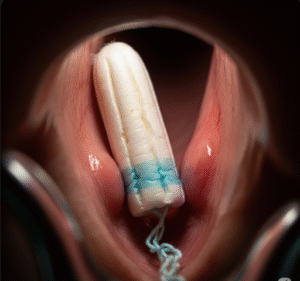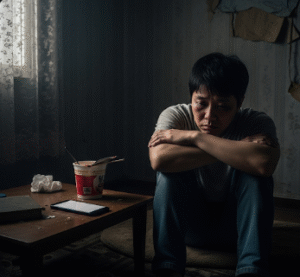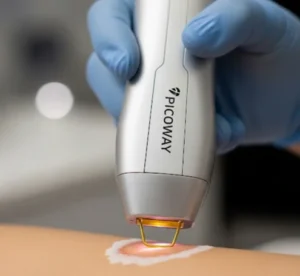Overview
Prickly heat, also known as miliaria, is a skin condition caused by blocked sweat ducts, resulting in small red or clear fluid-filled bumps and intense itching or prickling sensations. It commonly occurs in hot, humid climates or during excessive sweating, and is particularly frequent in infants, young children, and adults exposed to heat or physical exertion.
While usually benign and self-limiting, severe cases may lead to secondary bacterial infections if the skin is scratched excessively. In Korea, dermatology clinics provide diagnosis, topical treatments, and preventive guidance for prickly heat, ensuring comfort and rapid recovery.
➤ Red or clear bumps on the skin caused by blocked sweat glands
➤ Itching, tingling, or prickling sensations
➤ Common in hot and humid environments
Key Facts
➤ Prickly heat is most common in summer or tropical climates, but it can occur year-round in humid conditions.
➤ Infants are particularly susceptible due to immature sweat glands.
➤ Symptoms include tiny red bumps, itching, burning sensation, and mild inflammation.
➤ The condition is typically self-limiting but may recur with excessive heat or sweat.
➤ Korean dermatology centers offer topical treatments, skin cooling therapies, and lifestyle guidance to prevent recurrence.
What is Prickly Heat?
Prickly heat (miliaria) occurs when sweat glands become blocked, causing sweat to accumulate under the skin. Depending on the depth of the blockage, prickly heat can present in three main types:
➤ Miliaria Crystallina:
➤ Superficial blockage of sweat ducts.
➤ Appears as tiny clear bumps with minimal inflammation.
➤ Usually painless and resolves quickly.
➤ Miliaria Rubra (Common Prickly Heat):
➤ Blockage deeper in the epidermis.
➤ Causes red bumps, itching, and a prickling sensation.
➤ Most frequent form in adults and children exposed to heat.
➤ Miliaria Profunda:
➤ Rare form with deep sweat gland obstruction.
➤ Leads to firm, flesh-colored papules and sometimes pain or discomfort.
➤ More likely to cause systemic symptoms in individuals with heat stress.
What Symptoms Are Related To
Prickly heat manifests with distinct dermatological and sensory symptoms:
➤ Small red or clear bumps on areas prone to sweating, such as neck, chest, back, underarms, or groin.
➤ Itching, burning, or prickling sensations, worsened by sweating or heat exposure.
➤ Mild swelling or inflammation around affected areas.
➤ In infants, irritability or fussiness due to discomfort.
➤ Rarely, secondary infection with pus formation if scratched excessively.
➤ Temporary skin discoloration or peeling after healing.
What Causes / Possible Causes
Prickly heat arises primarily due to blocked sweat ducts, but several factors contribute:
➤ Environmental Factors
➤ Hot and humid weather leading to excessive sweating.
➤ Poor air circulation or wearing tight, non-breathable clothing.
➤ Physiological Factors
➤ Immature sweat glands in infants.
➤ Obesity or high body temperature, which increases sweating.
➤ Prolonged physical activity or exercise in hot conditions.
➤ Clothing and Hygiene
➤ Wearing synthetic fabrics that trap sweat.
➤ Excessive rubbing or friction from tight clothing or diapers.
➤ Medical Conditions
➤ Fever or heat-related illnesses can exacerbate sweat gland obstruction.
➤ Excessive sweating due to hyperhidrosis.
When Should I See My Doctor
Consult a healthcare professional if:
➤ Symptoms persist beyond a few days or worsen despite cooling measures.
➤ Pus, swelling, or severe redness appears, suggesting secondary infection.
➤ Infants become lethargic, febrile, or irritable.
➤ Recurring episodes occur despite preventive measures.
➤ There is uncertainty about the diagnosis or other skin conditions.
Early medical consultation ensures appropriate management and prevention of complications.
Care and Treatment
Prickly heat is generally self-limiting, but treatment focuses on relief of symptoms and prevention:
➤ General Care and Cooling Measures
➤ Move to cool, shaded areas to reduce sweating.
➤ Light, breathable clothing to promote air circulation.
➤ Cool baths or compresses to soothe affected areas.
➤ Avoid scratching to prevent secondary infections.
➤ Topical Treatments
➤ Calamine lotion or mild anti-itch creams to relieve discomfort.
➤ Hydrocortisone cream (low strength) for inflammation in severe cases.
➤ Antibiotic ointments if infection is suspected.
➤ Lifestyle and Preventive Measures
➤ Maintain good hygiene and dry skin.
➤ Reduce exposure to heat and humidity whenever possible.
➤ Ensure infants and children are dressed appropriately in breathable fabrics.
➤ Avoid excessive physical exertion in hot environments.
Treatment Options in Korea
Korea provides comprehensive dermatology care for prickly heat, combining diagnosis, topical therapy, and preventive guidance:
➤ Top Hospitals and Clinics
➤ Asan Medical Center (Seoul): Pediatric and adult dermatology care with modern cooling therapies.
➤ Samsung Medical Center: Skin evaluation, prescription topical treatment, and patient education.
➤ Seoul National University Hospital (SNUH): Multidisciplinary approach for chronic or recurrent cases.
➤ Yonsei Severance Hospital: Advanced dermatology interventions and lifestyle counseling.
➤ Diagnostic Tools
➤ Skin examination and differential diagnosis to rule out infections or other dermatoses.
➤ Laboratory tests for secondary infections if needed.
➤ Modern Interventions
➤ Prescription anti-itch or anti-inflammatory creams.
➤ Patient education on clothing, hygiene, and environmental modifications.
➤ Specialized care for infants or high-risk patients.

